Undervaluing our natural world: where would we bee?
Insect pollinators are responsible for most of what we eat, yet they remain largely overlooked in discussions about environmental protection.
Insect pollinators are responsible for most of what we eat, yet they remain largely overlooked in discussions about environmental protection.
Nearly 90% of wild plants and 75% of leading global crops depend on pollinators, including honeybees and bumblebees. Crucial to our economy, it is estimated that the disappearance of bees would cost UK farmers a staggering £1.8 billion a year through having to manually pollinate our crops.
Bees need urgent help. In Europe alone, almost 1 in 10 wild bees faces extinction. The UK has already lost 13 bee species since 1900, with another 35 under threat. To make matters worse, the recent authorisation on using harmful pesticides in the UK - despite an EU-wide ban - was a step in the wrong direction for imperilled bees.
It is paramount that we protect bees or we will all suffer the drastic consequences. With the continued use of harmful pesticides and 97% of bees’ natural habitat being lost in the last 60 years, the time to act is now.
We speak to postdoctoral scientist Dr Calum Raine on how he came to be working on bee genomics at the Earlham Institute (EI), and how bioinformatics is throwing them a lifeline.
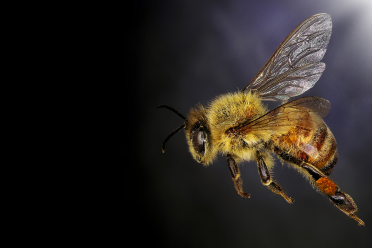
At EI, we are perfectly positioned to effectively carry out large-scale monitoring of bees at the genetic level.
Studying the history of pollination, we have access to thousands of bee samples from different parts of the UK and beyond. Some of our projects in collaboration with researchers at the Natural History Museum, London involve rare bees, such as Bombus muscorum, and samples from a century ago! This allows us to better understand their plight and make informed conservation strategies.
We can look for a number of risk factors. Populations with low genetic diversity are threatened by inbreeding depression. With a limited gene pool, they may not have the genetic tools in their toolbox to adapt around pressing ecological problems, such as disease, climate change, and the use of agricultural insecticides.
We can also screen for populations with a high prevalence of genetic markers that signify susceptibility to parasites.
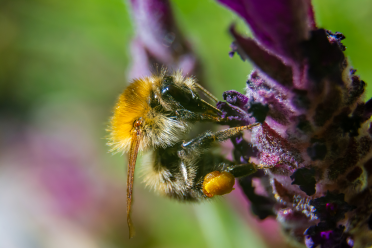

Aside from the ecological importance that drives our project, bees also display some incredibly interesting genetic quirks that present fundamental research questions.

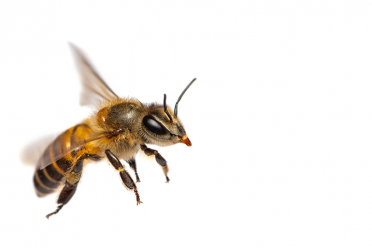
Collecting data from a wide geographical space allows us to find patterns that could be causing these issues, such as habitat fragmentation - breaking up biodiverse ecosystems. For example, Bombus muscorum has a poor pollen dispersal ability. This makes these bees more prone to habitat loss when their flower-rich areas are taken over by intense commercial farming - causing populations to die out.
Additionally, analysing genetic data from across previous decades permits the quantification of past diversity and pinpointing of historical bottleneck events, such as the introduction of agricultural insecticides around 1930-1945 and the long-term ramifications for bees.
As these datasets cover multiple species, we can further examine the dependent relationships between bees too, such as the cuckoo bumblebees, which do not establish their own colonies but instead take over existing nests and host those workers instead.
In collaboration with researchers at the University of East Anglia and University of Plymouth, we have included species that invaded the UK within the past twenty years, so we can map their progress across Britain, understand what makes them successful and assess their ecological impact.
Aside from the ecological importance that drives our project, bees also display some incredibly interesting genetic quirks that present fundamental research questions.

Pollination by bees upholds primary plant life in complex ecosystems, which provide habitats, materials, nutrient cycling, pollutant cleansing, medicines and more. It is believed that bees are responsible for one in every three mouthfuls of food we eat.

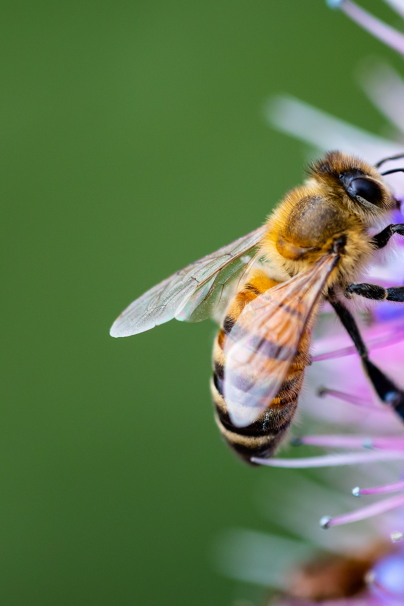
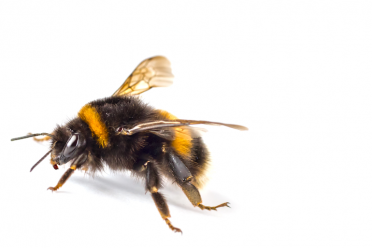
Bees, bumblebees and wasps are part of the Hymenoptera insect family, and exhibit a phenomenon called haplodiploidy.
While humans have two copies of every chromosome – one maternal and one paternal – male bees develop from unfertilised eggs and therefore possess only the single set of chromosomes donated to the egg by the queen.
You could think of them as ‘sperm with wings’. We usually discuss alleles (gene variants) as being dominant or recessive; the brown eyes and blue eyes genes are often used as a human example. However, with only one copy of every gene, male bees do not have recessive mutations.
In the absence of that second set of chromosomes, harmful mutations cannot be compensated by a corresponding homologous allele and advantageous mutations cannot be weakened.
This means that all mutations elicit maximum effect and are fully exposed to gene selection, which has fascinating implications on the rate of evolution.
This can now be investigated by accessing reference genomes emerging from the Earth Biogenome Project and vast population data. Eventually, the Darwin Tree of Life (DToL) project will have sequenced all UK bee species.
We’ve even used complex simulation software to examine haplodiploidy (as mentioned previously), making use of our parallel supercomputing facilities at EI. I've written software to simulate bee colonies by modelling mating between queen bees and competing haploid male bees to form new colonies. This tracks their fitness and how they acquire mutations over time so we can understand how the haplodiploid rate of evolution compares to that of normal diploid systems.

At EI, we are perfectly positioned to effectively carry out large-scale monitoring of bees at the genetic level.

I was coming to the end of my lab-based PhD when I made the not so subtle hint to my bioinformatician colleague that he needs to teach me to code! I was surprised he actually followed it through and gave me my first coding project.
Coding immediately became an obsession. On weekends, I would try to find out what was behind the data and understand the basic levels of computational biology; first programming in ‘C’ and then writing embedded assembly language for processors without an operating system.
I was inspired by the motive of the Darwin Tree Of Life Project (DToL) that EI are a partner of, which comprises the British and Irish component of the Earth Biogenome Project, who intend to sequence the genome of every eukaryotic species on the planet.
I went for a role in the Evolutionary Genomics Haerty Group at EI that involved working closely with DToL to immerse myself in their outpouring of conservation genomics data.
The wealth of knowledge among Dr Wilfried Haerty and his team was intimidating; it was a step beyond my comfort zone but I knew that taking up the offer of being a bioinformatician at EI would springboard my career, and by improving bee health through genomics , I would help make a difference to our environment.
This has been a highly collaborative project and environment where I have worked closely with EI’s Genomics Pipelines and our research group, who have invested a great deal of time into developing new DNA extraction protocols that sequence one body part of a male bee, instead of a whole group of specimens having to undergo sampling.
The most startling thing about working at EI, is that when I encounter difficulty using a software tool, I can walk down the corridor to speak with the people who invented it.
There are in-house genome assembly experts who I regularly approach for guidance and the assistance of our genome annotation team has been invaluable. Our team has excellent knowledge of bee biology and a passion for this project that mirrors my own.
The project is pushed forward by generous peers with an experienced eye for data analysis and my supervisor Dr Wilfried Haerty, who can rapidly understand and debate concepts of population genetics.
Our Business Support team even arranges the entire process door-to-door whenever we attend conferences to promote our research wider afield. The Institute is an effective machine geared toward scientific productivity. It is a clear demonstration of the importance of diversity. I am truly standing on the shoulders of giants. One day I hope somebody can stand on mine.

This has been a highly collaborative project and environment where I have worked closely with EI’s Genomics Pipelines and our research group. Thanks especially to Karim Gharbi, Leah Catchpole, Alex Durrant, Naomi Irish, and Will Nash.
The Genomics Pipelines team enabled collaborative development of new laboratory protocols for this project, including:
This is one way that the Genomics Pipelines team works with our Faculty and other users. We also offer sequencing services, which you can find out more about here:
By collaborating with the science community across Europe, every aspect of my work involves help from many other inspiring Institutes.
I have received great research consultation from the Universities of Uppsala and Copenhagen; assembled bee genomes for the University of East Anglia and Natural History Museum; and sourced samples from the University of Plymouth, the Bumblebee Conservation Trust, Imperial College and the Insect Pollinators Initiative; as well as using existing bee data from the Sanger Institute and University of Oxford.
In progressing our study, ideally, our work will identify bee populations most at risk of decline, understand the issues they face and implement a strategy for their conservation. Using our genome sequencing and bioinformatics analysis we will identify bee populations with a low level of genetic diversity, or genetic markers that indicate susceptibility to disease. This data could then be applied to conservation strategies such as where to move bumblebee nests from ‘healthier’ areas to high-risk areas to help improve their diversity.
Pollination by bees upholds primary plant life in complex ecosystems, which provide habitats, materials, nutrient cycling (ecological recycling - reusing soil nutrients), pollutant cleansing, medicines and more. It is believed that bees are responsible for one in every three mouthfuls of food we eat.
As the world hopefully begins to overcome the pandemic in 2021 and COVID restrictions are lifted, I hope to see sample collecting and sequencing resume to full capacity, so our understanding of bee species can again push forward at full acceleration to give nature a much-needed helping hand.